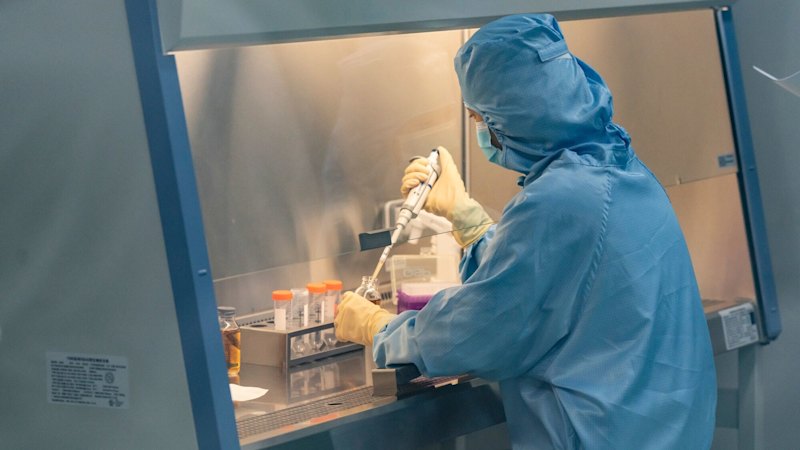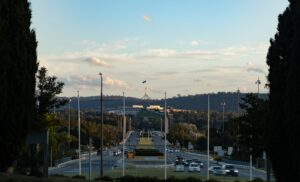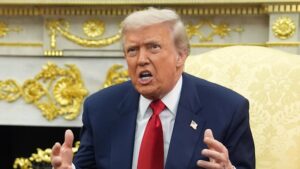
Chinese pharmaceutical companies are largely insulated from the impact of US President Donald Trump‘s recent announcement of a 100 per cent tariff on patented drugs. Analysts indicate that the focus of China’s pharmaceutical industry is shifting towards biotechnology partnerships and boosting domestic retail sales, which lessens the effect of these tariffs.
Effective from October 1, 2023, the new duties target drugs shipped into the United States. However, companies establishing manufacturing plants on American soil will be exempt from these tariffs. Trump has previously hinted at increasing tariffs as high as 250 per cent on imported drugs, positioning this move as part of a broader strategy to bring jobs and investment back to the US.
Since the beginning of Trump’s latest tariff war, China has been a central focus, with tensions escalating since April 2023. According to analysts at Jefferies, the recent tariffs are “not a big concern” for Chinese drug manufacturers. They cite these companies’ “minimal sales exposure to the US” and their reliance on licensing agreements rather than direct exports, which makes them less vulnerable to tariffs.
“Most Chinese biotechs have US partners and are immune to the tariffs, so [the tariffs] barely dent China’s healthcare powerhouses,” Jefferies noted in a recent client report. Many Chinese biotech firms are still one to two years away from commercialisation in the US market, meaning their revenue predominantly comes from royalties through partnerships with multinational companies.
“China’s pharma companies are advancing in research rather than manufacturing,” said Alan Zhang, portfolio manager at Ox Capital. “The tariffs will impact some of the traditional pharma but should be limited. However, it is likely to be inflationary to the US.”
China remains a vital source for active pharmaceutical ingredients and some generic medications for the US market. Once primarily known for producing counterfeit versions of Western drugs, China has transformed into a significant centre for biotechnology innovation in recent years. This transition has been accelerated by government support, positioning the sector as a national priority.
As a result, foreign investment has surged. Western venture capital firms are increasingly backing Chinese biotech start-ups, while major global pharmaceutical companies such as AstraZeneca, GlaxoSmithKline, and Johnson & Johnson are engaging in licensing agreements and acquiring drugs developed and trialled in China.
Geopolitical Strains and Legislative Challenges
The announcement of the tariffs coincides with heightened geopolitical tension affecting China’s healthcare sector. Earlier this month, reports indicated that the Trump administration is considering restrictions on licensing deals with Chinese firms. This reflects ongoing efforts in Congress to limit US business relationships with China’s biotech leaders.
One key legislative proposal is the Biosecure Act, introduced in 2024, which aimed to prevent Chinese biotech companies—such as major contract services providers WuXi AppTec and XuCi Biologics—from obtaining federally funded contracts. Although the bill did not pass, it highlights Washington’s determination to restrict China’s progress in the life sciences field.
According to Paul Zhang, a partner at Bluestar BioAdvisors, the evolution of China’s drug strategy demonstrates a significant shift. “Initially, it was how to do shoes and sneakers faster and cheaper and better. Then it was how to build iPhones faster and better. Now it’s how to build biotech and AI faster and better,” he remarked earlier this year.
In contrast to Chinese firms, many Japanese and Australian pharmaceutical companies depend heavily on the US market for a substantial share of their revenue. For instance, Eisai in Japan earns one-third of its sales from the US market, facing significantly higher uncertainty. Australia’s CSL, while also having a strong American presence, has had to reassure investors that its US operations will mitigate potential impacts from the tariffs.
Some economists suggest that the overall impact of the tariffs may be muted due to exemptions for local production and stockpiles set up in anticipation of trade disruptions. Neil Shearing, chief economist at Capital Economics, stated, “Many of the world’s largest pharmaceutical companies either already have some production in the US or have announced plans to build production in the near future.”
He further noted that the pharmaceutical sector is one where significant inventory accumulation may have occurred this year, as importers prepared for potential tariffs, likely reducing the effective tariff rate’s impact.
As the landscape of healthcare and pharmaceuticals continues to evolve, the actions taken by the US government will have far-reaching implications, not only for American consumers but also for the global pharmaceutical market.







